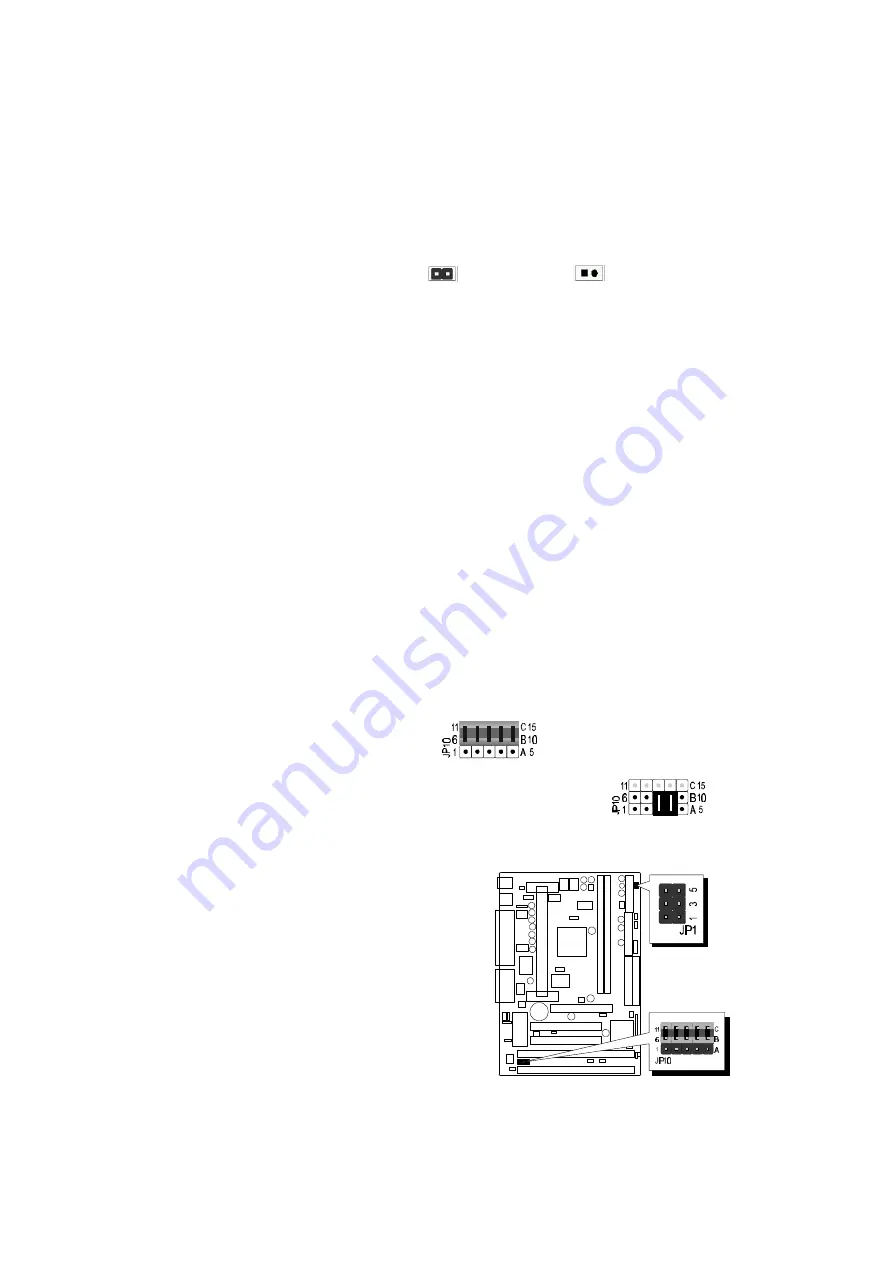
- 15 -
Jumpers
Several hardware settings are made through the use of jumper caps to connect jumper pins on
the main board. The jumper's pin 1 on main board will be on the top or on the left when hold-
ing the main board with the keyboard connector away from yourself.
Jumpers with two pins will be shown as for Close (On) and for Open (Off).
To connect the pins, simply place a plastic jumper cap over the two pins.
Listed diagrams on right side show the sample position on jumper group of JP10:
1)
Setting CPU Clock from BIOS
- jumper pack on AUTO.
(Factory default)
2)
Adjust multiplier manually from hardware
- jumper pack on MANUAL, multiplier set to 5X manually.
Figure 2-23 shows the position of JP1 and JP10 on the mainboard.
Figure 2-23
CPU Clock Speed Selection - JP1 and JP10
HOT-675Z featuring CPU Plug & Play function, the user needn't to adjust onboard system
clock and CPU multiplier.
When the system power-on first time, BIOS will set CPU clock
speed to
233 MHz or 350 MHz
(depend on CPU external frequency) automatically
. If
your CPU speed higher than 233 MHz or 350 MHz, you only have to entry BIOS to set CPU
speed to the higher one.
HOT-675Z mainboard features a clock generator to provide adjustable system clock frequency.
JP1 is a 6-pin jumpers which determine the system clock frequency 66 MHz to 133 MHz.
CPU Plug & Play function is supported by
66MHz / 100MHz.
HOT-675Z mainboard provides Jumper group of JP10 to figure the CPU core clock multiplier.
By inserting mini jumpers on MANUAL group, the user can figure the Host Bus Clock/CPU
Core Clock ratio (multiplier) manually.
CPU Plug & Play function is supported when an Jumper Pack inserted on
AUTO group.














































